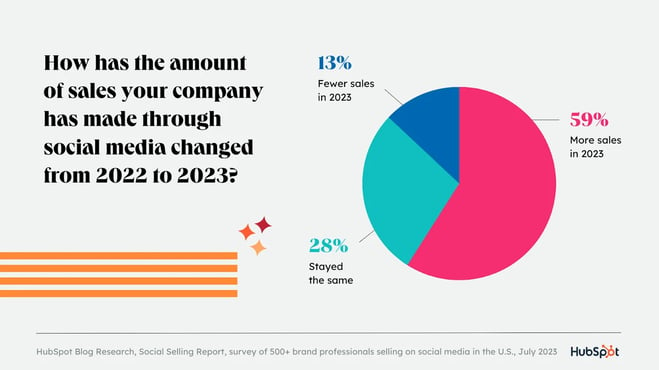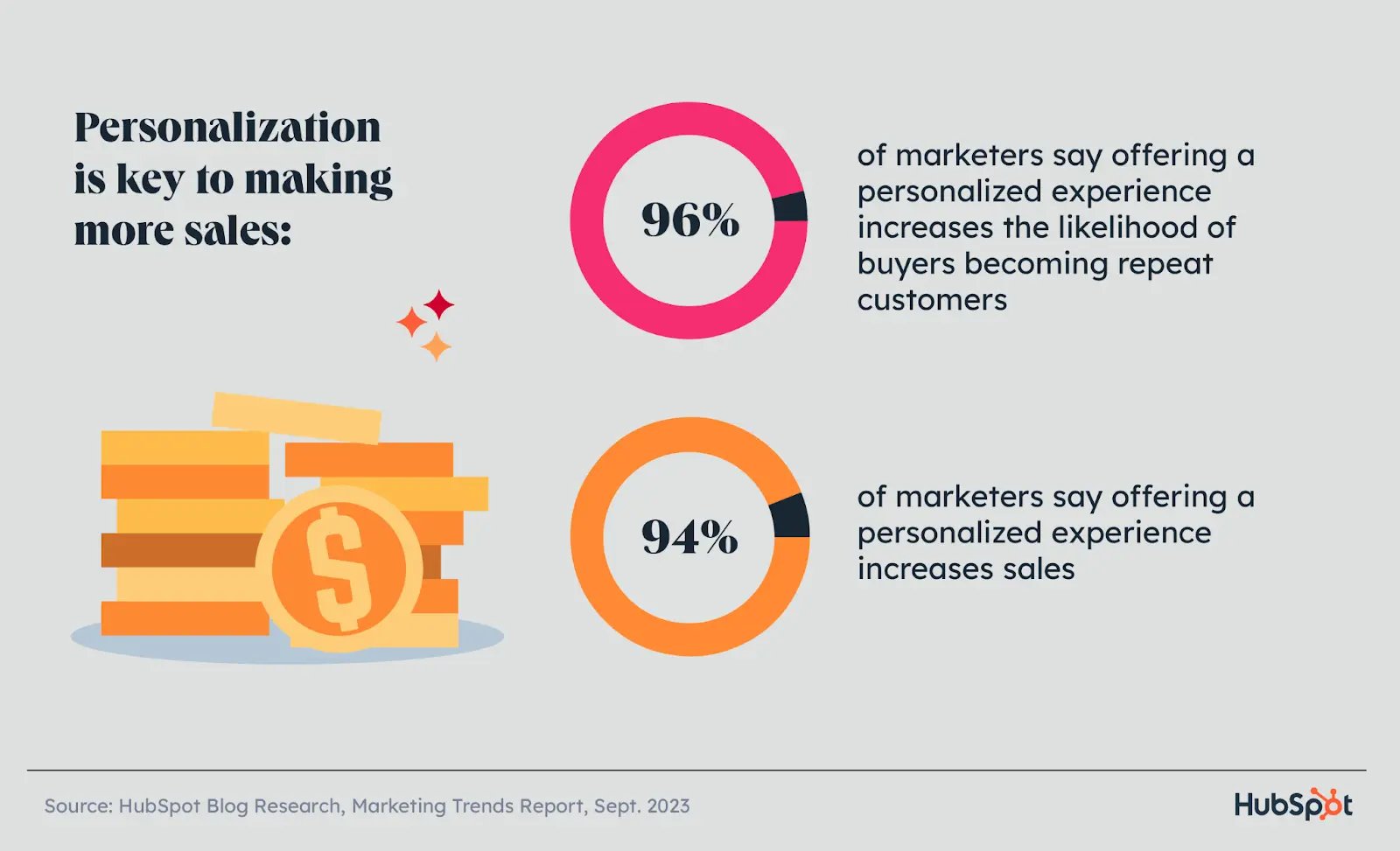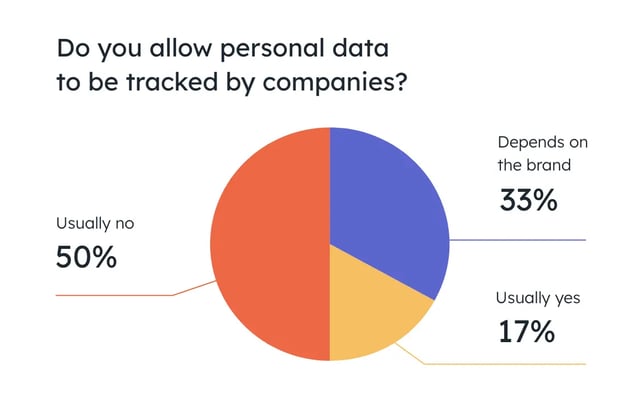Our view at Stack - Simplify growth with an all-in-one platform. Powerful marketing, sales, and support automation. Integrated CMS. Scalable software. Crafted for customer experience.
I doubt that the shift to entirely online shopping experiences would’ve happened as quickly as it did without the pandemic.
But, the rapid shift showed us that the factors influencing consumer purchasing decisions are always changing. In this piece, I’ll go over consumer behavior statistics I’ve pulled from our 2024 Consumer Trends Report to explain what’s driving consumers this year.
![Download Now: The State of U.S. Consumer Trends [Free Report]](https://softwarestack.tech/wp-content/uploads/2024/04/ebf9ec8e-a468-455a-943e-80aa4e6be694.png)
Consumer Behavior Stats
1. Social shopping is an ecommerce standard.
We’ve talked a lot about social shopping on the HubSpot Blog because it’s the new face of ecommerce. I don’t see its popularity slowing down, especially since marketers are seeing the benefits: 59% report more social sales in 2023 than they had in past years.

Image Source
Our latest consumer trends survey found that social media is Gen Z and millennials’ preferred channel for product discovery, and 33% have discovered a new product on social media in the past three months.
In the past three months, 1 in 4 social media users have also directly bought a product on a social media app, which is a 39% YoY change. More than 80% say that they’re satisfied with their latest social media purchase, and they were most likely to have transacted on Facebook or TikTok since they offer the best in-app shopping experiences.
Despite its growth, consumers are still wary. Only 47% feel comfortable buying through social media apps, and 45% trust social media platforms with their card information, likely because the main worry is that these companies aren’t legitimate.
Featured Resource: If you’re developing your ecommerce strategy, our free Ecommerce Planning Kit gives you all the tools you need to be successful, from market research templates to abandoned cart emails.
2. Gen Z heads the social shopping pack.
Gen Z leads the social buying pack, as they’re more engaged in social commerce than other generations. Some stats:
- New product discoveries for Gen Z happen most often on social media
- 43% have bought a product directly within an app in the past three months.
- They prefer to discover products on social media in short-form videos and social media marketplaces with off-app purchases (like Facebook Marketplace).
- They do most of their social shopping on TikTok and Instagram, which they say offer the best in-app shopping experiences.
If Gen Z is your target audience, offering social shopping opportunities or shopping-forward content is more important than ever.
I do want to say that you can still look into and consider social shopping if your target audience is made up of other generations, as there are always people who have different preferences.For example, I should be totally on board with social shopping because of my millennial-gen-z-cusp generational alliance, but I’m incredibly weary and skeptical of it.
On the other hand, my mom’s generation has consistently shown minimal interest in social shopping the past three times we’ve run our Consumer Trends Survey. Still, she’s more interested in it than I ever would’ve expected. I had to give her the same “Don’t trust every ad you see on the internet” talk, which I’m sure sounded just like the “Don’t believe everything you read online” talk she gave me when I was a child.
All that to say — even if your audience isn’t entirely on board with social shopping, you still might have some segments of your audience that would be interested in shoppable opportunities if you offered them. To learn more about how to make social shopping work for you, I recommend reading our Consumer Trends Report.
3. Social media search is growing in popularity.
Search engine usage decreased by 12%, while social search usage increased by 4% between May 2023 and January 2024. 21% of consumers prefer to get answers to their questions online through social search, which is a 40% YoY increase from that same period.
I’m not saying search engines are dead and to throw your SEO strategy out the window, especially because consumers still say that search engines are the most effective way to get their questions answered. Instead, with the rise of social shopping, consumers are interested in a seamless buying experience that happens all in one place, from searching for products to post-purchase customer service.
My Pro Tip: Create a social media SEO strategy to adapt to this new consumer behavior.
4. Consumers like socially responsible brands.
Corporate social responsibility is when companies have thoughtful practices and initiatives that contribute to the betterment of the world.
I ran a survey in April 2024 about corporate social responsibility, and 90% of respondents said that companies should practice social responsibility. They are increasingly choosing to support brands that take a stance on social issues like fair treatment of employees, diversity and inclusion, and sustainable business practices.
So, why this desire? I attribute it to people wanting to spend their money with brands that let them uphold their day-to-day values. For example, it makes sense that someone committed to sustainability in their day-to-day life would want to buy from a sustainable business that uses eco-friendly packaging and sustainable production methods.
People also want to see themselves represented and support brands that support people like them. It makes sense that a Black consumer would want to purchase from a brand that supports the Black community.
5. Consumers seek personalization.
Consumers want personalized experiences, but most say that the content they see from brands isn’t personalized to their interests.
Marketers feel similarly and say that the experience customers get from their brand is somewhat personalized, but this is at direct odds with their belief that offering a personalized experience increases the likelihood of repeat customers.

Image Source
Offering product recommendations is an easy way to provide a personalized experience, as is offering usage recaps (think Spotify’s annual Wrapped campaign) or smart content.
Generative AI is a new tool for marketers to boost personalization, and those who already use it say it helps them create more personalized content (77%) and personalize customers’ experiences with their company (72%).
6. Consumers have concerns about data privacy.
While consumers want personalization, they’re also weary about how companies use their data, and 50% usually decline to have their personal data tracked.

Image Source
76% of respondents to our survey reported being concerned about how companies use their personal data and strongly agree that they should have complete control over how it’s used. The main determining factor when deciding who to share data with is their level of trust in said company.
I am with consumers on this, as there’s a 99% chance I’m clicking “Reject All” when a website asks me about cookies. But, this is at odds with what I know as a marketer — having data about users is the best way to give them the personalized experience they want.
The best way to accommodate these privacy concerns but continue to deliver on expectations is to give users control.
Consumers told us that they want to choose whether to share their data and to be able to delete it from your database whenever they want. They also want to ensure that you store it safely and that you have their best interests in mind when safeguarding their data from unauthorized access.
7. Consumers are seeking support in DMs.
One in five Gen Z and Millennials has contacted a brand through DMs for customer service, and 70% of social media marketers say their companies already offer service on social media to accommodate the support requests they’re getting.
Consumers are turning to social media DMs for customer service, which makes sense considering the social shopping boom. If they’re buying a product on Instagram Shops, why wouldn’t they want to send a DM to ask a question within the same app? It eliminates additional actions, like finding a phone number to make a phone call or visiting a website.
8. Friends and family offer the most trusted recommendations.
As marketers, we know that influencer marketing is powerful and impactful.
We know that influencer marketing is powerful. Consumers like and trust influencers and their recommendations, but reviews from their friends and family are still more impactful than recommendations from influencers.
This tracks for me as a consumer. I follow a few influencers but still take their recommendations with a grain of salt. I’m much more likely to indiscriminately purchase something if my best friend or mom told me they liked it.
From a marketer’s perspective, I view this as a signal that consumers want to hear from buyers like themselves. I recommend sharing customer reviews and promoting UGC on your profiles, as testimonials from relatable people can go a long way.
This doesn’t mean abandoning influencer marketing. If you choose to use it, make sure the influencers’ niche aligns with your audience, and let the influencers be themselves and share their own personality—authentic and relatable content on social media is more important than anything else.
Give Consumers What They’re Looking For
I just went over a few of the key consumer behavior statistics that stood out to me from our latest iteration of our Consumer Trends Report.
Now that you know what’s influencing consumer behavior, you can craft a marketing strategy that appeals to your audience’s most pressing needs and interests.

![]()
If Hubspot is of interest and you'd like more information, please do make contact or take a look in more detail here.
Credit: Original article published here.
